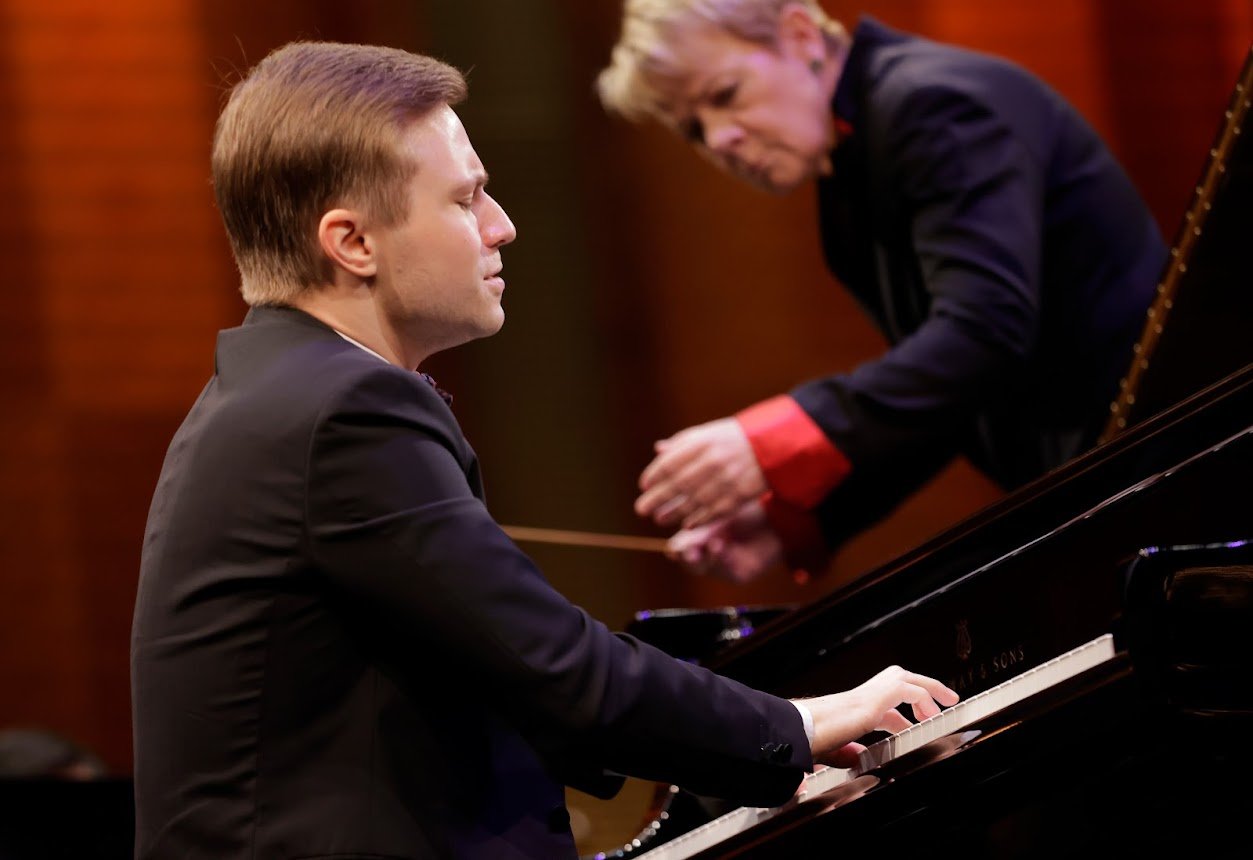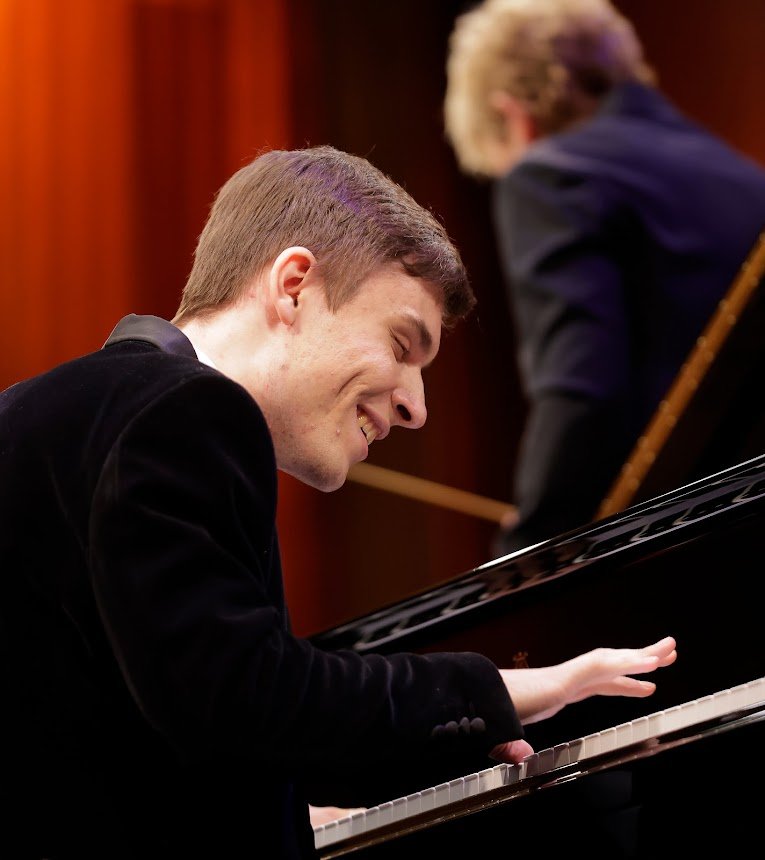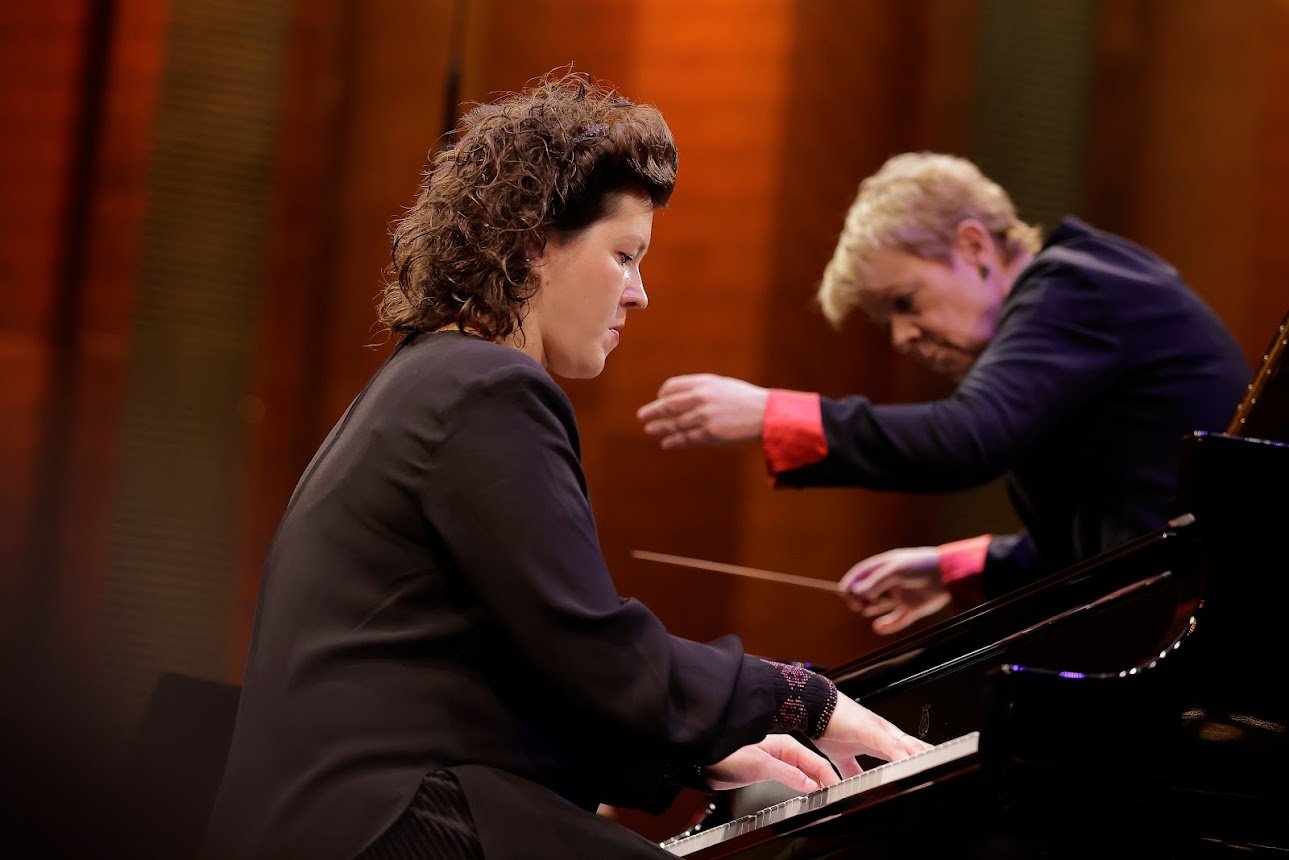Final Round Concert 4: Choni, Khandohi, Geniushene
—Wayne Lee Gay
On Saturday afternoon—sixty recitals and twenty-four concertos later—we finally saw the light at the end of the tunnel, as three of the six finalists played the last of their three concertos with the Fort Worth Symphony and conductor Marin Alsop at Bass Performance Hall.
Ukrainian Dmytro Choni, 28, closed his bid for the fame and fortune attached to a Cliburn medal by backing up to the classical era to offer Beethoven's Third Piano Concerto. A bright, ear-catching clarity dominated his traversal of the generally lean textures of the first movement; a muted, reverent timbre in the solo opening passage opened the central Largo movement. Later in the movement, conductor Alsop, who has kept the orchestra at a low volume level throughout the final concerto phase, shushed the wind obligatos beneath the piano arpeggios, an odd musical strategy.
The final Allegro offers more of a showcase for the pianist. Here, and throughout the concerto, Choni presented solid Beethoven interpretation. One audience member rushed down the aisle during the ovation to present him with a bouquet of sunflowers, giving the audience an opportunity to cheer Ukrainian solidarity.
Belarusian Uladzislau Khandohi, 20, followed with Chopin's PIano Concerto No. 1 in E minor, a weak product of the composer's early years. There's not much the conductor can do with the ponderous orchestral introduction but plow forward; when his turn came, Khandohi found the poetry lurking in the piano part, there to be discovered by the insightful interpreter.
The middle movement here is the strongest part of Chopin's score, anticipating the beauty of that composer's later Nocturnes; Khandohi brought limpid scales and a dreamlike quality. The main test of this concerto arrives in the dance-like main theme of the finale, which demands a quick, light touch; Khandohi was up to the task.
Russian Anna Geniushene, 31, closed the competition with an eccentric take on Tchaikovsky's Piano Concerto No.1 (the main showpiece of the competition's namesake). Geniushene and conductor Alsop both ranged to the edges of the dynamic range, but without clear logic or transition; the result was a badly disjointed first movement. While the gentle lyricism of the outer sections of the middle Andantino emerged clearly, the middle section had a belabored quality; Geniushene rushed the third movement, and, though conductor Alsop tempered the speed during the orchestral interludes, Geniushene continually rushed forward, turning the Finale into a horse race.


